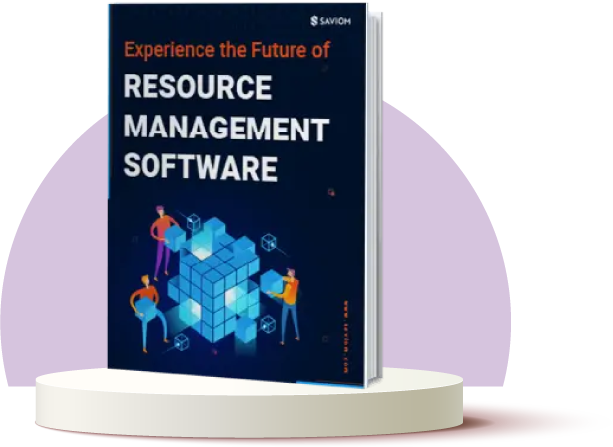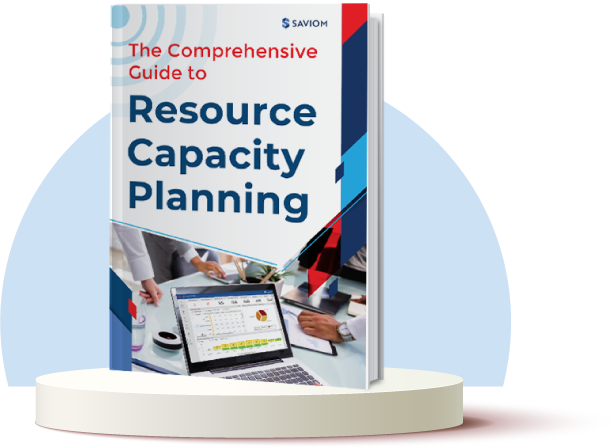Over the years, project management has evolved from traditional practices to a sophisticated discipline powered by technology, innovation, and strategic foresight.
Emerging project management trends such as the proliferation of AI, the rise of hybrid work models, and the integration of data analytics are reshaping how projects are planned, managed, and delivered. While keeping pace with these evolving trends can feel overwhelming, failing to adapt could mean falling behind in a hyper-competitive business landscape.
This blog brings you the top 10 project management trends of 2025 that are set to transform the industry. But first, let’s learn about the evolution of project management practices over the years.
History of Project Management
Project management has been practiced for centuries and dates back to the Egyptian era when the Pyramids of Giza were built. However, it has drastically evolved into a more enhanced form since then.
Following are the four main stages of the evolution of project management.
Stage – 1 (Before 1958)
The first breakthrough in the project management landscape was the creation of the Gantt Charts by Henry Gantt in 1910. It is still used extensively to visualize a project’s schedule, task dependencies, and milestones. The other path-breaking inventions during this period were the Precedence Diagramming Method, Critical Path Method (CPM), and Project Evaluation Review Technique (PERT).
Stage 2 (1958 – 1979)
The next phase saw the emergence of modern project management practices that are still relevant today. The introduction of the Work Breakdown Structure (WBS) revolutionized project planning by breaking complex initiatives into smaller, manageable tasks. Other key advancements during this era were Conflict Management and Iterative Project Planning.
Read More: Effective Ways to Create a Work Breakdown Structure
Stage 3 (1980 – 1994)
While “agile” wasn’t yet coined, the Scrum methodology emerged in 1986 and gained widespread adoption across industries. Another milestone was the introduction of certification programs, with the Project Management Institute (PMI) conducting its first exam in 1984. Further, The PMBOK® Guide of 1987 introduced risk management as a minor component relative to the triple project constraints – scope, time, and cost.
Stage 4 (1995 to present)
The modern era witnessed project management evolving into a critical discipline embraced by enterprises and SMBs. Agile methodologies, initially exclusive to IT, have expanded to diverse industries. Furthermore, the rise of remote work redefined team collaboration, and the introduction of Critical Chain Project Management (CCPM) provided new techniques to ensure projects are delivered on time and within budget.
The following section lists the top trends in project management that’s reshaping the industry.
10 Emerging Project Management Trends of 2025
“Figuring out what the next big trend is tells us what we should focus on.” ~ Mark Zuckerberg
The quote succinctly explains the significance of understanding and implementing future trends. So, let’s look into the most promising project management trends of 2025 and beyond.
Proliferation of AI and Automation
According to a Gartner report, “By 2030, 80% of the work in today’s project management will be eliminated as AI takes on traditional PM functions.”
This statistic underscores the seismic shifts AI technology has brought to the project management landscape. AI-powered tools are transforming project planning by analyzing vast datasets to identify patterns, trends, and risks that would otherwise go unnoticed. With these insights, project managers are better equipped to set realistic timelines, accurately estimate budgets, and identify potential bottlenecks.
Moreover, AI solutions help monitor and optimize resource allocation and utilization throughout the project lifecycle. Besides, the integration of AI helps project managers to automate time-consuming, repetitive processes such as task scheduling, progress tracking, and report generation. This allows project teams to focus on high-value, strategic activities and drive business success.
Read More: Applications of AI in Project Management
Focus on Sustainability and Green Project Management
“According to the GPM report, a significant majority (95%) of organizations classify their sustainability practices as either “developing” (67%) or “beginning” (28%).”
The global push for sustainable practices has led to the introduction of “green project management.” This trend emphasizes the importance of integrating sustainability principles throughout the project lifecycle, from initiation to closure. It focuses on
reducing carbon footprints, minimizing resource waste, and promoting energy-efficient solutions.
More project leaders are incorporating eco-friendly practices to comply with stricter environmental regulations and meet global sustainability demand. For example, in construction projects, we are witnessing greater use of recyclable materials and renewable energy sources such as solar panels and geothermal systems to reduce environmental impact.
Adoption of Hybrid Project Management Methodology
According to PMI, “The use of these hybrid approaches has increased from 20% in 2020 to 31% in 2023.”
Every project is unique, and so are its requirements and goals. Traditionally, some industries followed waterfall, while others solely relied on agile models to execute their projects. However, this practice is rapidly changing. Now, organizations are adopting the hybrid approach to enhance project execution, provide incremental value, and deliver faster results.
For instance, in IT projects, the waterfall approach is often used during the project plan phase as it provides clarity regrading the scope of work. During the execution stage, the agile method is applied as it ensures there is enough room and flexibility to accommodate changes and reevaluate the project progress at certain stages. Therefore, the hybrid approach leverages the strength of the two models to enhance flexibility and improve final deliverable quality.
Read More: What are the Different Project Management Methodologies?
Greater Use of Digital Twins
Digital twins—virtual replicas of physical assets, systems, or processes—are gaining popularity as a valuable tool for project management. By creating a digital model of a project or product, project managers can simulate and analyze various scenarios, enabling more accurate forecasting and improved decision-making. This way, it allows for real-time monitoring of project progress and risk evaluation.
For example, an IT firm creates a digital twin of its global data centers, covering server racks, cooling systems, network infrastructure, and power supply lines. This digital twin monitors the entire infrastructure in real-time and provides precise data on operational status and system performance. The model can also predict potential downtime, optimize energy usage, and identify weak spots in the network to improve service reliability and operational efficiency.
Rise in Integrated Change Management
As projects become more complex, it has become imperative to embed well-structured change management practices to manage modifications throughout the project lifecycle. This trend has given rise to the integrated change management (ICM) framework that provides a holistic approach to adapt quickly to shifting demands, new technologies, and evolving stakeholder expectations.
ICM helps align change initiatives with project and overall business objectives. It also emphasizes the continuous monitoring and feedback loops to evaluate the progress of change initiatives. It involves cross-functional collaboration, where various departments work together to identify, address, and mitigate any challenges that arise during change implementation.
Read More: What is Change Management in Project Management, and Why Is It Important?
Implementation of Stringent Cybersecurity Measures
As per an Accenture report, “Organizations with good cybersecurity measures reported 26% lower costs from data breaches and 18% more revenue growth.”
With the rise of remote/hybrid work models and increased reliance on digital tools, cybersecurity has become a critical focus area. Organizations are now integrating advanced security protocols, such as data encryption, real-time threat detection, and stringent access controls, into their workflows to protect sensitive information.
As cyber threats become more sophisticated, project managers must work closely with IT teams to address vulnerabilities, implement threat detection systems, and conduct regular security audits. Moreover, integrating robust cybersecurity protocols into project management processes will be essential to maintaining trust with stakeholders, safeguarding intellectual property, and ensuring the integrity of project deliverables.
Reliance on Data Analytics for Smarter Project Management
Data analytics is becoming integral to project management as organizations increasingly rely on data-driven insights to optimize decision-making and operational efficiency. With advanced analytics tools, managers can analyze large volumes of historical and current project data to identify patterns, predict risks, and track performance more accurately. It provides an opportunity to optimize project performance with proactive measures.
For instance, managers can use predictive analytics to estimate project budgets, timelines, and resource needs with greater precision. Moreover, they can leverage business intelligence dashboards and visualization tools to present complex data in a digestible format, making it easier to track milestones and make informed decisions.
Read More: How Can You Make Data-Driven Decisions with Resource Management Software?
Advent of Blockchain Technology in Project Management
By leveraging blockchain’s decentralized and transparent nature, managers can improve various aspects of project management. Blockchain-powered smart contracts are automated, self-executing agreements that enforce project terms without the need for intermediaries. This way, firms can streamline approval workflow and reduce administrative overhead.
Moreover, an encrypted framework ensures that the project is secure from unauthorized access and tampering, safeguarding sensitive information. In addition, the immutable ledger records all project transactions and information, providing a single source of truth to all stakeholders. This transparency fosters trust and enhances accountability throughout the project lifecycle.
Advancements in Project Management Tools
According to PMI, “41% of professionals reported significant enhancement in project delivery since adopting advanced, AI-driven project management tools.”
Modern project management tools are becoming more dynamic, scalable, intuitive & user-friendly than ever. These tools leverage AI, machine learning, and cloud computing to offer real-time updates, predictive insights, and seamless integrations across multiple platforms. By centralizing project data, these software solutions allow teams to collaborate more effectively, track progress with greater accuracy, and generate comprehensive reports.
Next-gen project management software offers advanced functionalities such as automated task assignment, intelligent resource allocation, and real-time BI reporting. Additionally, the rise of mobile-friendly project management solutions enables teams to stay connected and productive regardless of location, supporting remote and hybrid work models.
Next-Gen Risk Management to Navigate Market Volatility
In the present dynamic project environment, leveraging effective risk management strategies is essential to navigate market volatility effectively. By utilizing predictive analytics, machine learning algorithms, and advanced scenario planning, managers can identify potential roadblocks beforehand and take proactive measures.
Next-gen risk management emphasizes continuous monitoring and dynamic adaptation rather than relying on static risk assessments. This agility empowers project managers to respond effectively to shifts in the external environment, keeping projects on track in uncertain conditions.
Read More: Enterprise Risk Management Framework: 8 Core Components
These trends in project management are changing the way organizations and business leaders manage and optimize their project portfolios. Moreover, embracing these changes is critical to addressing the complexities of modern-day projects.
Conclusion
John C. Maxwell, an American author and speaker, says, “Change is inevitable. Growth is optional.”
Similarly, the project management landscape is set to evolve. Now, the onus is on companies to either adapt and grow or stay behind. So, its time managers join the bandwagon and walk along with the current project management trends to stay relevant and sustainable in the long haul.
What do you think will be the most significant project management trends in the coming years?
The Glossary
Read More: Glossary of Resource Workforce Planning, Scheduling and Management












